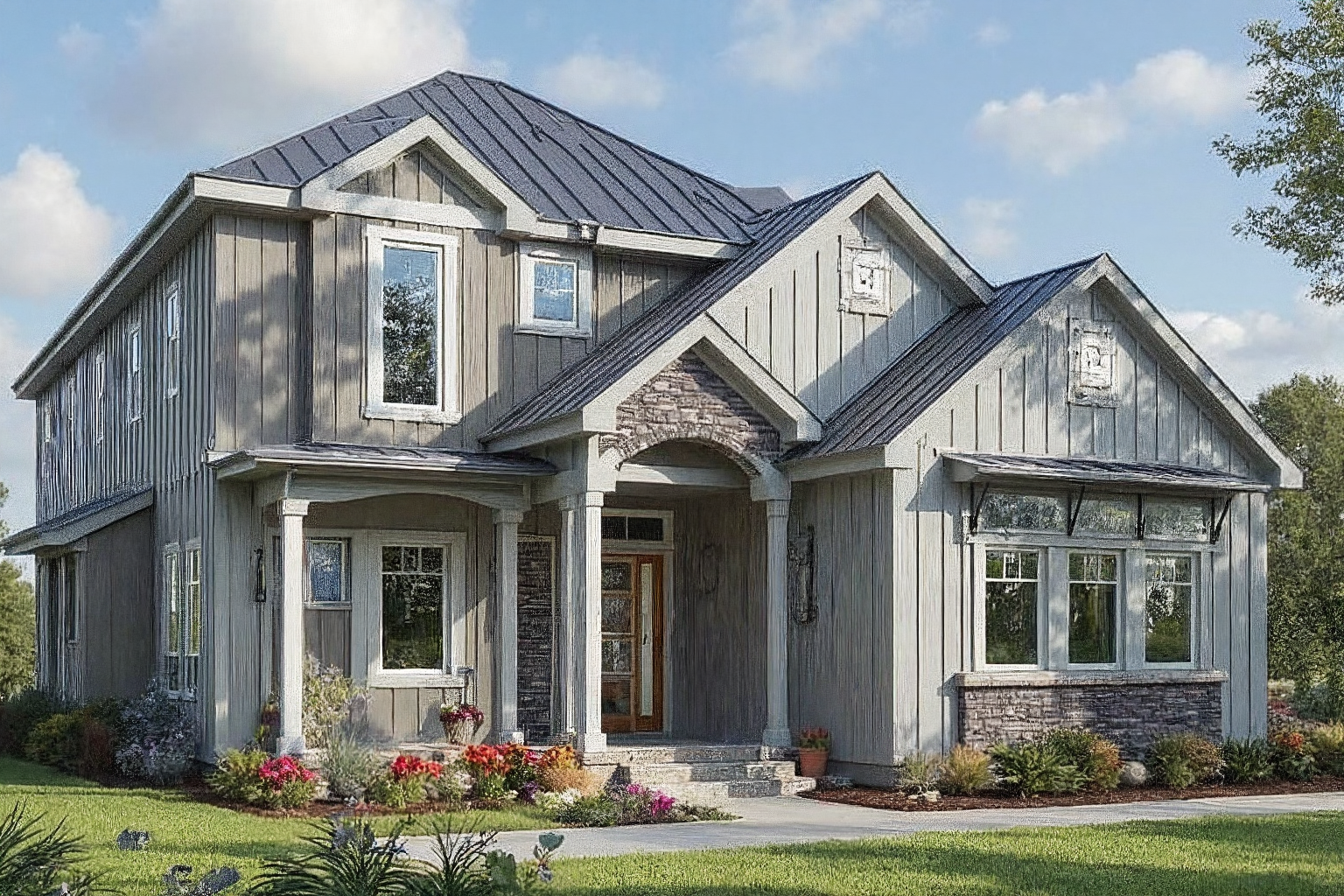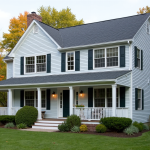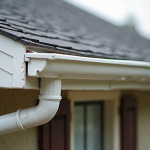Choosing the Right Metal Siding: An In-Depth Comparison of Aluminum and Steel
Introduction: Aluminum vs. Steel Siding
Choosing the right siding is a crucial home improvement decision, impacting your home’s curb appeal, protection, and overall value. Metal siding, encompassing both steel and aluminum options, stands out for exceptional durability and longevity, making it a popular choice among homeowners undertaking renovations. With the array of building materials available, navigating the selection process can be daunting. This article provides an in-depth comparison of aluminum and steel siding, two prominent choices in exterior cladding, exploring their pros, cons, and ideal use cases to empower you to make a well-informed decision. Investing in new siding is a significant aspect of home renovation, and understanding the nuances of each material is essential. Factors like climate, budget, and aesthetic preferences play a vital role in determining the most suitable metal siding for your home. For instance, homeowners in coastal regions often prioritize corrosion resistance, making aluminum siding a compelling option. Conversely, those in areas with extreme temperature fluctuations might lean towards steel siding for its robust strength, while also considering necessary rust prevention measures. Whether you’re aiming for a modern, sleek aesthetic or a more traditional look, understanding the characteristics of each material is paramount. This comprehensive guide delves into the specifics of aluminum and steel siding, offering insights into their performance, maintenance requirements, and cost-effectiveness. From roofing and siding considerations to long-term value, we’ll cover essential aspects of choosing the right metal siding for your home improvement project. We’ll also explore how different types of metal siding integrate with various architectural styles, helping you visualize the final outcome. By carefully weighing these factors, you can confidently select the best siding installation for your home, ensuring lasting beauty and protection. Moreover, we’ll discuss the importance of proper installation techniques, a crucial factor in maximizing the lifespan and performance of your chosen siding material. This in-depth comparison will equip you with the knowledge necessary to make an informed investment in durable siding that enhances your home’s exterior design for years to come.
Detailed Comparison: Aluminum vs. Steel
When evaluating durability and lifespan for your home improvement project, steel siding stands out for its exceptional strength and impact resistance, making it a robust choice for homes in areas prone to hail or high winds. However, its strength comes with added weight, which can impact installation complexity and cost. Aluminum siding, while not as impact resistant, offers superior corrosion resistance, a critical factor for coastal regions or areas with high humidity. This inherent resistance to rust and oxidation translates to a longer lifespan with less maintenance, making aluminum siding a durable choice for various climates. For homeowners considering long-term value, aluminum’s reduced maintenance needs can offset its slightly higher initial cost. When choosing between these durable siding options, consider the specific environmental challenges your home faces. Cost-effectiveness is a major consideration in any home renovation project. While steel siding generally boasts a lower upfront cost, making it an attractive option for budget-conscious homeowners, long-term expenses should also be factored into the equation. Aluminum siding, though initially more expensive, requires less frequent maintenance due to its inherent corrosion resistance. This can lead to savings down the line, especially in harsh climates where steel siding might necessitate frequent repainting or repairs. Considering the overall lifecycle cost, including installation, maintenance, and potential repairs, can help homeowners make informed decisions aligned with their budget and long-term home improvement goals. Climate performance is crucial when selecting exterior cladding, and both steel and aluminum siding offer unique advantages depending on the prevailing weather conditions. Steel siding demonstrates excellent resistance to temperature fluctuations, making it suitable for regions experiencing extreme heat or cold. However, steel’s susceptibility to rust in humid or coastal climates necessitates additional protective coatings and regular maintenance to ensure its longevity. Aluminum siding excels in coastal and humid environments due to its natural corrosion resistance. Its lightweight nature also contributes to energy efficiency by reducing the load on the building structure. Choosing the right metal siding enhances your home’s exterior design and provides long-lasting protection against the elements. Energy efficiency is a growing concern for homeowners, and both aluminum and steel siding contribute to improved insulation, reducing energy consumption and lowering utility bills. Aluminum’s reflective properties excel at deflecting solar heat, keeping homes cooler in warmer climates and minimizing the need for excessive air conditioning. Steel, while not as reflective, can be paired with insulating backer boards to enhance its thermal performance. When considering energy efficiency, factors like local climate, building orientation, and existing insulation should be evaluated to determine the optimal metal siding choice. Aesthetics play a significant role in home improvement projects, and both steel and aluminum siding offer versatile design options to complement various architectural styles. Steel siding, with its classic look, is available in a wide range of colors and profiles, mimicking the appearance of traditional wood siding while providing enhanced durability. Aluminum siding, known for its sleek and modern aesthetic, is equally versatile in terms of color and finish options, making it suitable for contemporary home designs. Whether you’re aiming for a traditional or modern look, both aluminum and steel siding can enhance your home’s curb appeal and add lasting value. The installation process for metal siding can influence both the project timeline and overall cost. Steel siding, due to its heavier weight, typically requires more specialized equipment and experienced installers, which can increase labor costs. Aluminum siding’s lightweight nature simplifies handling and installation, often resulting in quicker project completion and potentially lower labor expenses. Proper installation is crucial for the long-term performance of any siding material, so choosing experienced roofing and siding contractors is essential for a successful home renovation project.
Specific Use Cases and Recommendations
For homes in coastal regions, the choice of metal siding becomes even more critical due to the corrosive effects of salt spray. Aluminum siding, with its inherent corrosion resistance, is the clear winner in these environments. Its protective oxide coating prevents rust and degradation, ensuring a longer lifespan and reduced maintenance compared to steel in coastal areas. Home improvement projects near the ocean often prioritize aluminum siding for its durability against the harsh elements, making it a sound investment for building materials in these locations. For homeowners undertaking exterior design projects in coastal regions, aluminum siding offers both protection and aesthetic appeal. When considering roofing and siding options for a coastal home, the longevity and low maintenance of aluminum make it a top contender. In regions with extreme temperature fluctuations, steel siding demonstrates excellent performance due to its dimensional stability. Steel’s strength allows it to withstand expansion and contraction caused by temperature changes without warping or buckling. However, in humid climates within these regions, the potential for rust becomes a significant concern. Proper installation, including the use of rust-inhibiting primers and coatings, is crucial for maximizing the lifespan of steel siding in these conditions. Home renovation projects in areas with fluctuating temperatures often choose steel for its durability, but careful consideration of humidity levels is essential for selecting appropriate building materials and ensuring the success of the exterior design. Aluminum, while not as dimensionally stable as steel, still performs well in varying temperatures and offers the added benefit of rust resistance, making it a viable alternative for home improvement in such climates. Modern homes often feature sleek, minimalist designs, and aluminum siding complements this aesthetic perfectly. Its smooth surface and availability in a wide range of colors, including contemporary shades, make it a popular choice for exterior cladding in modern architecture. Aluminum’s lightweight nature also simplifies siding installation, which can be a significant advantage in home renovation projects with complex designs. For those seeking durable siding that enhances the visual appeal of their modern home, aluminum offers a winning combination of form and function. Traditional homes, with their classic architectural styles, often benefit from the timeless look of steel siding. Steel’s strength and embossed textures can mimic the appearance of traditional wood siding, providing a historically accurate and durable alternative. Home improvement projects focused on preserving the character of older homes frequently utilize steel siding for its ability to maintain the original aesthetic while offering the advantages of metal siding, such as enhanced protection against the elements. Steel siding’s robust nature makes it a reliable choice for building materials in traditional home renovations, ensuring lasting beauty and structural integrity. When selecting exterior design elements for a traditional home, steel siding provides a classic touch that complements the architectural style. For homeowners looking to combine the charm of traditional design with the durability of modern building materials, steel siding offers an excellent solution. Furthermore, the versatility of both aluminum and steel siding extends to various roofing and siding combinations, allowing homeowners to customize their exterior design while ensuring long-lasting protection and curb appeal.
Maintenance Tips for Longevity
Maintaining the longevity and appearance of your metal siding is essential for preserving your home’s value and curb appeal. For aluminum siding, a simple yet effective maintenance routine involves regular rinsing with a garden hose, ideally every few months or as needed, to remove accumulated dirt, dust, and pollen. This prevents the buildup of grime that can dull the finish and potentially lead to corrosion over time, especially in areas with high humidity or airborne pollutants. In addition to rinsing, inspect your aluminum siding annually for any signs of damage such as dents or loose panels, which should be addressed promptly by a qualified siding installation professional.
Steel siding, known for its robust nature, requires a slightly different approach to maintenance. The primary concern with steel is preventing rust, which can occur if the protective paint layer is compromised. Therefore, regular inspections are crucial, focusing on identifying any scratches, chips, or areas where the paint has worn away. When you find such spots, immediately touch them up with a high-quality, rust-inhibiting paint that matches your siding’s color. This proactive approach will prevent the spread of rust and maintain the integrity of your steel siding. Furthermore, cleaning steel siding with a mild soap and water solution at least once a year will help remove any surface contaminants and maintain its aesthetic appeal. However, it is important to avoid using abrasive cleaners or harsh chemicals, as these can damage the finish and accelerate corrosion.
For both aluminum and steel siding, proper gutter maintenance is also an essential part of the overall care routine. Clogged gutters can lead to water overflow, which can cause damage to your siding and even your home’s foundation. Regularly cleaning your gutters and downspouts ensures that water is directed away from your siding, preventing water damage and potential corrosion issues. Consider installing gutter guards to reduce the frequency of cleaning, especially in areas with many trees. Additionally, when landscaping around your home, ensure that shrubs and plants are not directly touching the siding, as this can trap moisture and encourage the growth of mold or mildew.
When it comes to professional care, consider having your siding inspected by a certified home improvement contractor every few years. These experts can identify potential issues that might not be visible to the untrained eye and can provide recommendations for repairs or preventative measures. They can also offer advice on the best cleaning solutions and techniques for your specific type of metal siding. Investing in professional inspections can ultimately save you money in the long run by catching minor issues before they escalate into more costly repairs. Remember, proper maintenance is not just about keeping your siding clean; it’s about ensuring the long-term performance and protection of your home’s exterior cladding.
Finally, choosing the right metal siding for your home is just the first step. Proper siding installation and ongoing maintenance are equally important for ensuring that your investment lasts for decades. Whether you choose the lightweight corrosion resistance of aluminum or the robust strength of steel, a commitment to regular maintenance and timely repairs will keep your home looking its best and protected from the elements. By following these guidelines, you can maximize the life and performance of your metal siding, making it a valuable asset to your home.
Conclusion: Making the Right Choice
Making the right choice for your home’s exterior cladding involves careful consideration of various factors, from budget and maintenance to desired aesthetics and climate compatibility. By now, you should have a clearer understanding of the strengths and weaknesses of both aluminum and steel siding. This knowledge empowers you to make an informed decision that aligns with your home improvement goals and enhances your property’s value. Whether you’re embarking on a full-scale home renovation or simply replacing existing siding, choosing between aluminum and steel is a pivotal step. For homeowners prioritizing longevity and minimal upkeep, aluminum siding presents a compelling option. Its inherent corrosion resistance makes it particularly well-suited for coastal regions where salt spray and humidity can take a toll on traditional building materials. Moreover, aluminum’s lightweight nature simplifies installation, potentially reducing labor costs. While the initial investment might be slightly higher than steel, the reduced maintenance requirements over time can lead to long-term cost savings. Steel siding, on the other hand, offers exceptional durability and impact resistance, making it a robust choice for homes in areas prone to hailstorms or other extreme weather events. Its classic look complements a variety of architectural styles, from traditional farmhouses to modern designs. Homeowners seeking a cost-effective solution with proven performance will find steel siding a viable option. However, it’s crucial to factor in the necessary maintenance, such as regular inspections for scratches and prompt touch-up painting to prevent rust, particularly in humid climates. Proper installation is paramount for both aluminum and steel siding to ensure optimal performance and longevity. Engaging experienced roofing and siding professionals guarantees a weathertight seal and minimizes the risk of future problems. A well-installed metal siding system not only protects your home from the elements but also contributes to its curb appeal and overall value. Choosing durable siding like aluminum or steel is an investment that pays dividends over time, providing peace of mind and enhancing the beauty of your home. Ultimately, the best choice depends on your specific needs, budget, and the climate conditions in your area. By weighing the pros and cons of each material and considering factors like maintenance requirements and desired aesthetics, you can confidently select the metal siding that will protect and beautify your home for years to come. Remember to consult with reputable siding installers and explore available warranties to ensure a successful and satisfying home improvement project.


